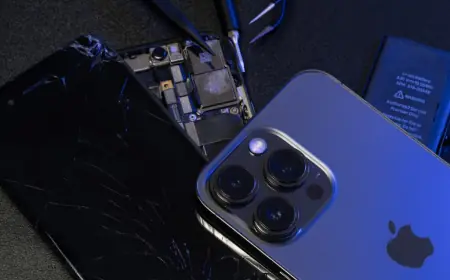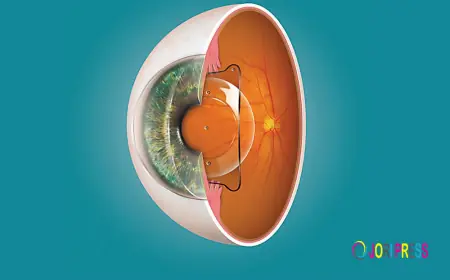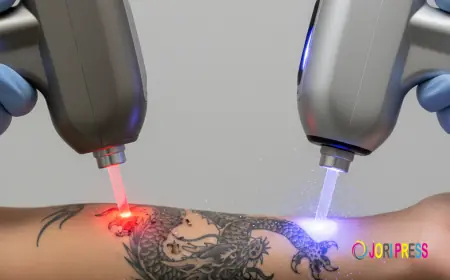The Role of Elastics and Wires in Metal Braces Treatment
With proper care, patience, and cooperation with your orthodontist, the combined power of elastics and wires will bring you closer to the confident smile you’ve always wanted.

When you think of orthodontic treatment, you probably picture the brackets on each tooth, but the real workhorses of the process are the elastics and wires. These components play a critical role in moving teeth into their correct positions over time. Many patients choosing Metal Braces in Dubai are surprised to learn how much science and precision go into these seemingly simple parts. Understanding their function can help you appreciate the process and commit fully to your treatment plan.
How Wires Guide Tooth Movement:
The archwire is the central element that connects all the brackets, applying consistent pressure to guide teeth into alignment. Made from high-grade stainless steel or nickel-titanium, these wires are designed to be both strong and flexible. Over time, orthodontists switch to different thicknesses and materials to maintain progress and achieve precise tooth positioning.
The Role of Elastics in Treatment:
Elastics, or rubber bands, are small but powerful tools that help correct bite issues by applying targeted pressure. Depending on their placement, elastics can bring the upper and lower jaws into better alignment, close gaps, or adjust the tilt of specific teeth. They work in conjunction with the wires to ensure comprehensive results.
Types of Elastics Used in Braces:
There are two main types of elastics in braces treatment—ligature elastics and interarch elastics. Ligature elastics hold the archwire to the brackets, while interarch elastics connect the upper and lower jaws. Both play unique roles in achieving the final, desired alignment.
Material Advancements in Wires and Elastics:
Modern orthodontics has introduced advanced materials that improve comfort and efficiency. Heat-activated nickel-titanium wires, for example, become more flexible at cooler temperatures and stiffer at body temperature, providing continuous, gentle pressure. Similarly, elastics now come in hypoallergenic materials to prevent irritation.
How Orthodontists Adjust Wires:
During adjustment appointments, your orthodontist may tighten or replace your wires to maintain the right level of pressure. This step is essential because as teeth move, the force exerted by the original wire diminishes, requiring periodic updates to continue progress effectively.
Importance of Wearing Elastics as Prescribed:
Consistency is key when it comes to wearing elastics. Skipping days or not wearing them for the recommended hours can slow treatment significantly. Following your orthodontist’s instructions ensures that bite corrections and tooth movements stay on schedule.
Managing Discomfort from Adjustments:
After wire changes or when starting new elastics, it’s common to experience mild soreness or tenderness. This discomfort usually subsides within a few days and is a sign that your braces are working. Over-the-counter pain relief and soft foods can help ease this period.
Oral Hygiene Challenges with Elastics and Wires:
Both elastics and wires can make brushing and flossing more challenging. Food particles can easily get trapped, increasing the risk of plaque buildup. Using interdental brushes, floss threaders, and water flossers can help maintain excellent oral hygiene throughout treatment.
Common Issues with Elastics and Wires:
Sometimes, wires may poke into the cheek, or elastics may snap unexpectedly. While these issues are minor, they should be addressed promptly to avoid delays in treatment or unnecessary discomfort. Orthodontic wax and carrying extra elastics can help manage these situations until you can visit your orthodontist.
How Elastics and Wires Work Together:
Elastics and wires are a dynamic duo in orthodontics. The wires set the foundation for tooth movement, while elastics fine-tune the bite and jaw positioning. Together, they ensure that the final results are both functional and aesthetically pleasing.
The Final Stages of Braces Treatment:
In the last phase of treatment, wires and elastics are adjusted with precision to perfect the bite and tooth alignment. This stage focuses on small, detailed movements that make a big difference in the overall outcome, ensuring the smile is as healthy as it is beautiful.
Final Thoughts:
Elastics and wires may seem like simple parts of braces, but they are essential to the success of your orthodontic journey. Without them, precise tooth movement and bite correction wouldn’t be possible. If you’re considering Metal Braces in Dubai, understanding how these components work can help you stay motivated and committed to your treatment. With proper care, patience, and cooperation with your orthodontist, the combined power of elastics and wires will bring you closer to the confident smile you’ve always wanted.
What's Your Reaction?
 Like
0
Like
0
 Dislike
0
Dislike
0
 Love
0
Love
0
 Funny
0
Funny
0
 Angry
0
Angry
0
 Sad
0
Sad
0
 Wow
0
Wow
0


















































